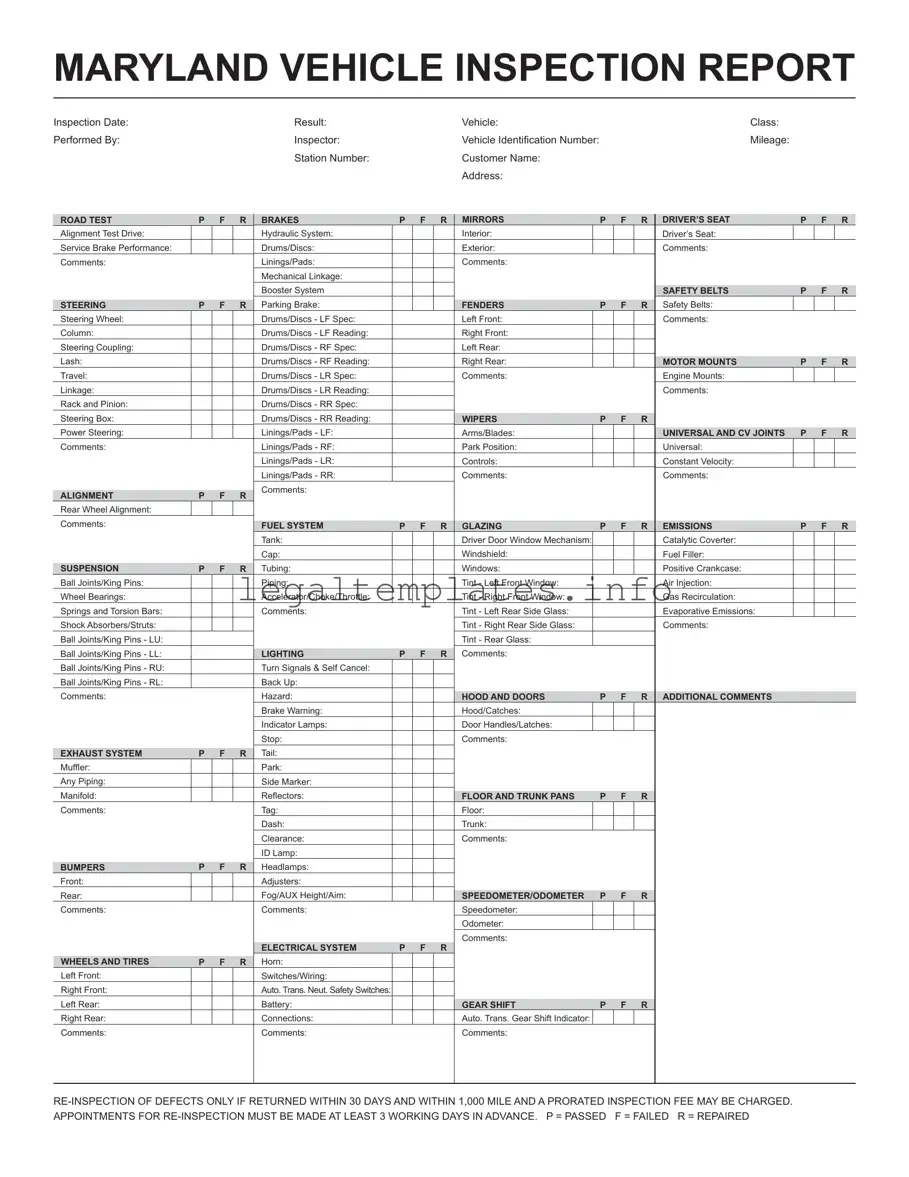What is the Maryland Vehicle Inspection Report?
The Maryland Vehicle Inspection Report is an official document that details the condition and safety of a vehicle. It covers an extensive range of inspection points, including road test results, brake system, steering, mirrors, safety belts, fuel system, emissions, lighting, and more. Each section is marked with either Passed (P), Failed (F), or Repaired (R), reflecting the vehicle's compliance with Maryland safety standards.
Why do I need a Maryland Vehicle Inspection Report?
A Maryland Vehicle Inspection Report is required for various reasons, including but not limited to the sale or transfer of a vehicle, registration of a used vehicle, and at times for renewing vehicle registration. It ensures that vehicles meet Maryland's safety and emission standards, contributing to safer driving conditions and environmental protection.
What does the inspection cover?
The inspection covers several key vehicle components such as the road test, brake system, steering mechanism, mirrors, driver’s seat, safety belts, motor mounts, fuel system, emissions, lighting, electrical system, wheels and tires, and more. It assesses both the functionality and safety aspects of these components.
How is the inspection result indicated?
The inspection result is denoted as Passed (P), Failed (F), or Repaired (R) for each inspected component. "Passed" indicates the component meets the state’s safety standards, "Failed" denotes a failure to meet these standards, and "Repaired" signifies that a previously failed component has been fixed and now passes inspection.
What should I do if my vehicle fails the inspection?
If your vehicle fails the inspection, you must repair the indicated failures. The report will detail the specific issues that need to be addressed. Once the repairs are made, the vehicle can be brought back for re-inspection of the repaired defects only, within 30 days and 1,000 miles, potentially at a prorated inspection fee. It's essential to schedule a re-inspection appointment at least 3 working days in advance.
How often do I need to get my vehicle inspected?
In Maryland, a vehicle inspection is generally required at the time of vehicle sale or transfer, or when registering a used vehicle. Other specific circumstances may also necessitate an inspection. Unlike some states that require annual or biennial safety inspections for all vehicles, Maryland does not have a statewide periodic vehicle inspection requirement.
Can the inspection results affect my vehicle’s insurance?
While the primary purpose of the Maryland Vehicle Inspection Report is to ensure compliance with safety and emissions standards, failing an inspection may indirectly affect your vehicle insurance. For instance, some insurance companies may require a current inspection for underwriting or to maintain the validity of your policy, especially for commercial or specialty vehicles.

